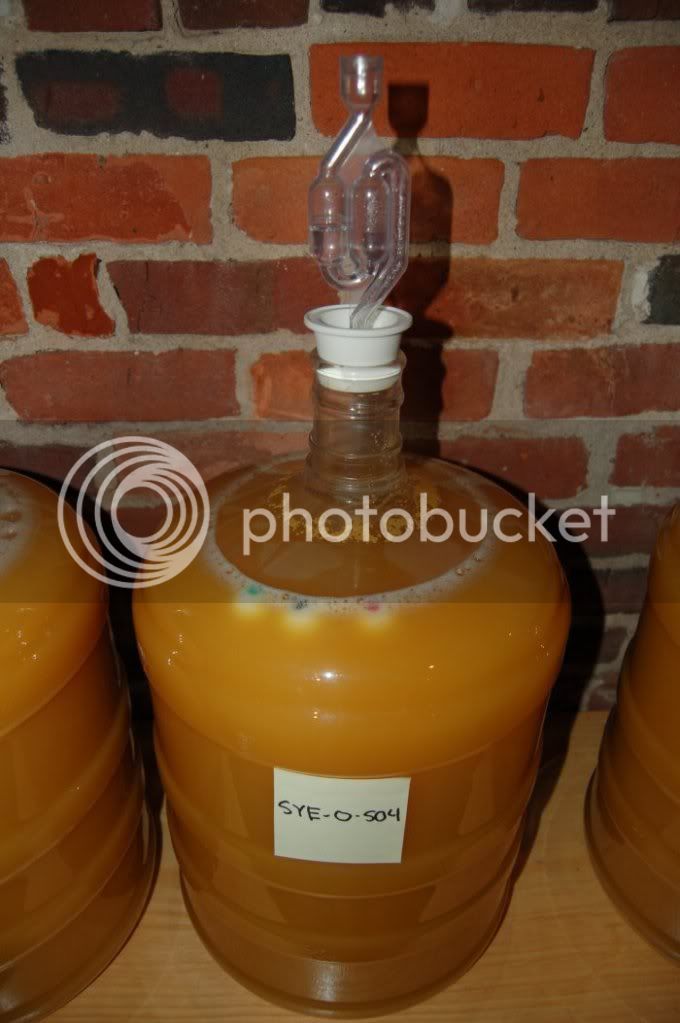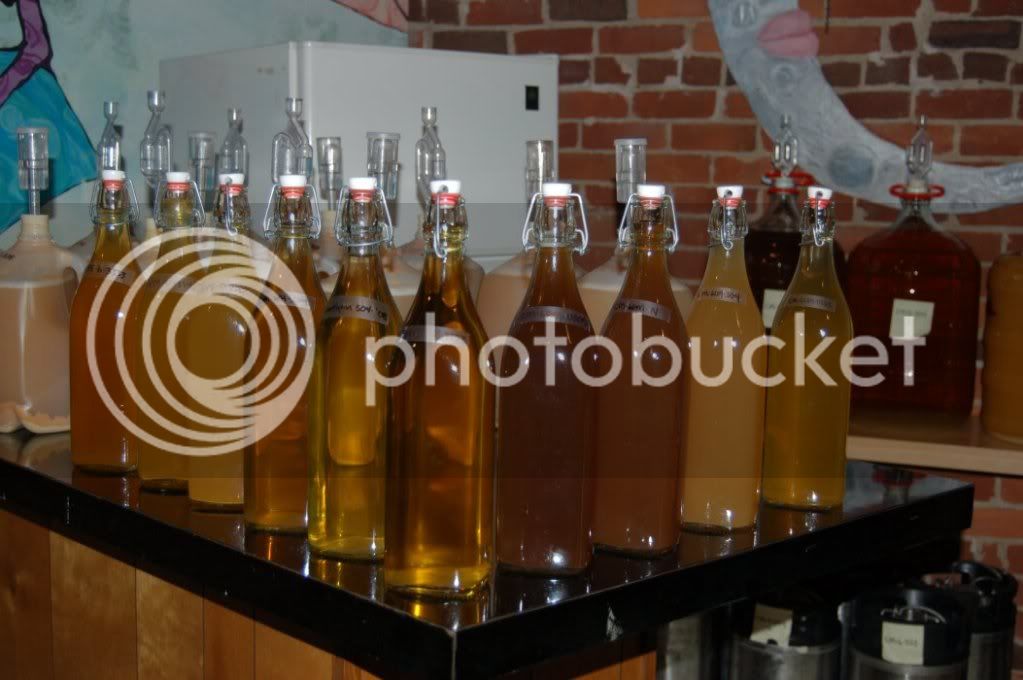CvilleKevin
Well-Known Member
One of the challenges of stopping the cider with some residual apple sweetness is knowing when to start checking the SG.
On this last batch, I tried out a new method using some brew balls to monitor the progress. There is a company that makes these for beer, and they were good enough to make me a custom set for cider. So far, they seem pretty useful for cider and Ill probably be getting some more of these for the next round of batches. Heres the website: http://www.brewballstore.com/

The basic idea is that each of the balls drops at a certain SG, so you can tell how your ferment is progressing without repeatedly opening your carboy to take SG samples. Im not certain how useful this is for beer, but for cider it is really handy, because you can minimize the number of times that you need to take hydro samples to determine the optimal point to crash.
Say you are planning to crash around 1.010, and want to check the taste around 1.015 to make sure the sugar/acid balance is about right you can just sanitize the 1.010 and 1.015 balls, put them in the primary when you pitch the yeast and then dont worry about taking hydro samples until the 1.015 ball drops.
For this round of batches, I expected the S04 batch with no sugar to be ready to crash first. I figured Id crash around 1.008 and I put four balls in the primary to measure the progress: 1.020, 1.012, 1.010 and 1.008.
The 1.020 ball dropped on Thursday, seven days after the pitch, so that gave me a sense of how fast the ferment was moving and about when I would need to plan on crashing. Normally, I wouldnt take a hydro sample at this point but I did just to double check the accuracy it was spot on. The 1.012 ball dropped yesterday and I tasted again. The finish was a little more sour than I expected so I decided to crash at 1.010 instead of 1.008, which I did today. So I only took two samples prior to the crash and really only needed to take one.
I put the 1.025 and 1.015 balls in the natural fermenting batch so I could monitor that one as well. The 1.025 ball hasnt dropped yet, which is a good sign for a natural ferment, so I havent taken any samples yet. When the 1.025 ball drops, Ill take a reading and decide if I still should let it go to 1.015, or I might toss the 1.020 or 1.012 balls in, based on the taste of the sample at 1.025. If all goes well, I should only need to take one or two hydro samples from the natural yeast batch to nail the optimal crash point.
These things arent quite the perfect solution they dont yet have a stock set for common cider values, and Id rather have numbers for the SGs, rather than colors that I have to remember. Also, if the cider kicks up some krausen and gunks up the top of the carboy, it can be tough to see the balls. But they can definitely reduce the number of times you need to take hydro samples in order to nail a good crash point, which means less cleaning and less air getting to the cider. Im hoping these folks will continue to improve them for cider use.
On this last batch, I tried out a new method using some brew balls to monitor the progress. There is a company that makes these for beer, and they were good enough to make me a custom set for cider. So far, they seem pretty useful for cider and Ill probably be getting some more of these for the next round of batches. Heres the website: http://www.brewballstore.com/

The basic idea is that each of the balls drops at a certain SG, so you can tell how your ferment is progressing without repeatedly opening your carboy to take SG samples. Im not certain how useful this is for beer, but for cider it is really handy, because you can minimize the number of times that you need to take hydro samples to determine the optimal point to crash.
Say you are planning to crash around 1.010, and want to check the taste around 1.015 to make sure the sugar/acid balance is about right you can just sanitize the 1.010 and 1.015 balls, put them in the primary when you pitch the yeast and then dont worry about taking hydro samples until the 1.015 ball drops.
For this round of batches, I expected the S04 batch with no sugar to be ready to crash first. I figured Id crash around 1.008 and I put four balls in the primary to measure the progress: 1.020, 1.012, 1.010 and 1.008.
The 1.020 ball dropped on Thursday, seven days after the pitch, so that gave me a sense of how fast the ferment was moving and about when I would need to plan on crashing. Normally, I wouldnt take a hydro sample at this point but I did just to double check the accuracy it was spot on. The 1.012 ball dropped yesterday and I tasted again. The finish was a little more sour than I expected so I decided to crash at 1.010 instead of 1.008, which I did today. So I only took two samples prior to the crash and really only needed to take one.
I put the 1.025 and 1.015 balls in the natural fermenting batch so I could monitor that one as well. The 1.025 ball hasnt dropped yet, which is a good sign for a natural ferment, so I havent taken any samples yet. When the 1.025 ball drops, Ill take a reading and decide if I still should let it go to 1.015, or I might toss the 1.020 or 1.012 balls in, based on the taste of the sample at 1.025. If all goes well, I should only need to take one or two hydro samples from the natural yeast batch to nail the optimal crash point.
These things arent quite the perfect solution they dont yet have a stock set for common cider values, and Id rather have numbers for the SGs, rather than colors that I have to remember. Also, if the cider kicks up some krausen and gunks up the top of the carboy, it can be tough to see the balls. But they can definitely reduce the number of times you need to take hydro samples in order to nail a good crash point, which means less cleaning and less air getting to the cider. Im hoping these folks will continue to improve them for cider use.















![Craft A Brew - Safale BE-256 Yeast - Fermentis - Belgian Ale Dry Yeast - For Belgian & Strong Ales - Ingredients for Home Brewing - Beer Making Supplies - [3 Pack]](https://m.media-amazon.com/images/I/51bcKEwQmWL._SL500_.jpg)










































